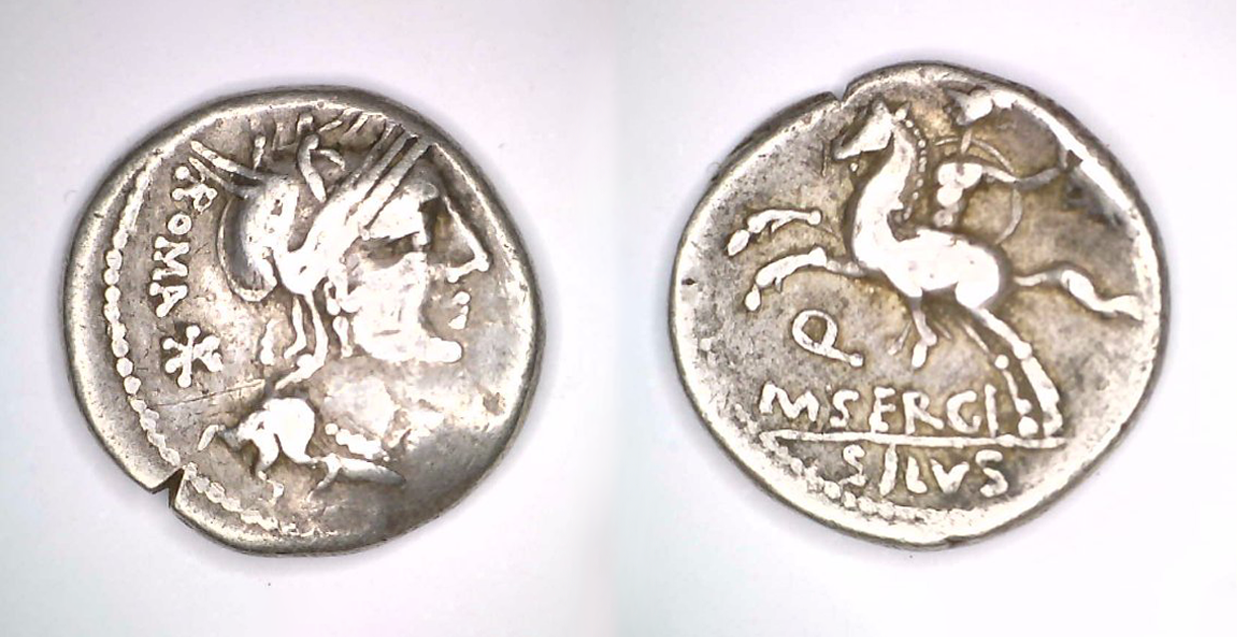Exploring the Empire’s Currency and Modern Parallels
Written by Graduate Research Assistant Madison Fogle
When was the last time you paid for anything with coins? Even with cash? For many people, paying with physical currency has become a rare occurrence with the ease that debit cards and electronic payment methods provide. In the U.S., the debate about whether to keep circulating the penny has persisted since the 1990s, but still, Americans and people worldwide continue to use coins as currency.
The truth is that coins have a lot to say about the values of the nation or society one lives in. The words used, the people honored, and the symbols depicted all reveal a deeper truth about our history, traditions, and society. This is just as true now as it was over 2,000 years ago during the Greco-Roman period, a time that continues to influence our own society and remain relevant in our conversations (see TikTok trend asking men how often they think about the Roman Empire).

[2015.7.6] Roman Republic coin, silver. Minted by Marcus Sergius Silus, quaestor (financial official) in 116-115 BCE. The coin shows the winged-helmed head of Roma, the personification of Rome, while the reverse depicts a scene from the 2nd Punic War (218-201 BCE)
After the formation of the Roman Empire, coins turned from honoring the patrician aristocrats to the central head of the government: the emperor. Typically, the emperor would be depicted in profile (head facing to the side) with his name printed around the border. Occasionally, emperors would have coins struck for their family to honor them, such as Augustus Caesar minting a coin in honor of his grandsons,Caius and Lucius Caesar. The opposite side of the coin would generally be minted with a pagan depiction of a personifiedLatin figure, such as Aequitas (justice and equality) or Concordia (marriage and society). Other times, the reverse image might show a scene of victory like this coin [2015.7.16] depicting a barbarian holding a vexillum (Roman military banner) kneeling in surrender to a hand on the upper right part of the coin.
![[2015.7.16] Roman Imperial coin, silver, AR denarius. Minted by Lucius Caninius Gallus, a moneyer (tresviri monetalis) in 12 B.C.E.](https://mcclungmuseum.utk.edu/wp-content/uploads/sites/78/2023/09/2015716_Front_Back.png)
2015.7.16. Roman Imperial coin, silver, AR denarius. Minted by Lucius Caninius Gallus, a moneyer (tresviri monetalis) in 12 B.C.E.
Because coins reflect the society in which they’re made, the imagery and the values shown through coins change as society changes. After Constantine the Great legalized Christianity and the Emperor Theodosius named it the Roman Empire’s official religion, the empire’s coins began to shift from pagan imagery to Christian imagery. This results in the meshing of classical pagan figures and Christian symbols. On this coin [2015.7.135], the goddess Victoria (victory) is seated and holding a shield with the symbol chi-rho. The chi-rho is a combination of the Greek letters X (chi) and P (rho), a shorthand for “Christ” used as a symbol for Jesus Christ and Christianity. This blending of religious traditions can be interpreted as a society trying to figure out its identity, claiming its past, and moving forward.
![[2015.7.135] Roman Imperial coin, bronze, AE 2. Struck during the reign of Flavius Theodosius Augustus in honor of his first wife Aelia Flaccilla (356-386 C.E.), in Antioch, 379-386 C.E.](https://mcclungmuseum.utk.edu/wp-content/uploads/sites/78/2023/09/20157135_Front_Back.png)
[2015.7.135] Roman Imperial coin, bronze, AE 2. Struck during the reign of Flavius Theodosius Augustus in honor of his first wife Aelia Flaccilla (356-386 C.E.), in Antioch, 379-386 C.E.
How else do you see Classical ideas persist in our culture? What changes in U.S. coins show cultural changes in our modern society?